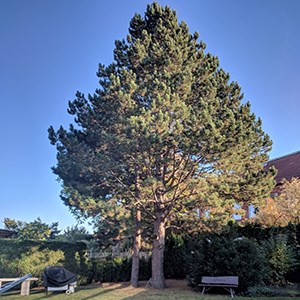Facts:
Contact person
Blaz Klobucar, PhD student, Department of Landscape Architecture, Planning and Management, blaz.klobucar@slu.se

Transboundary challenges such as climate change and urbanisation require transboundary approaches for sustainable management. In this research, the boundary is concerned with private ownership of urban green structures, in particular, trees in urban environment.
As trees are providing ecosystem services that mitigate negative environmental impact and improve well-being of all people in an urban area, limiting our knowledge and ecosystem services capacity to only trees in public domain seems less than ideal. This PhD project engages with this knowledge gap and focuses on residential trees attempting to uncover some of this untapped potential.
Urban landscapes at large comprise a mosaic of residential properties, often populated with trees. In fact, the urban residential areas are sites where most of the human-environment interactions happen for a rapidly increasing amount of people in urbanized land. Often populated by trees, these e.g. backyards, front-yards and other types of outdoor spaces, are a major source of ecosystem services for all inhabitants, most notably, air pollution removal carbon storage, water uptake, and heat mitigation to name a few. However, as they are on private property, assessing this ES resource is difficult and only done in rare cases by municipal staff in Sweden.
With this FORMAS-funded PhD project, we designed a study that included spatial sampling, tree inventories, questionnaires with home-owners, modelling of ecosystem services of trees and spatial analysis of the results. All aimed at learning more about residential environment interactions and implications in how to bridge the gap between ecosystem services on public and private property for greener, more resilient future cities.
As public managers have limited possibilities or measures at hand to affect the residential tree population, understanding the dynamics and potential implications can prove to be of great value. With this, urban open space managers can evaluate potential measures by monitoring the development of residential areas across private property boundaries which may prevent tree cover loss. Ideally, this would lead to integration of private property trees into city-wide urban forestry plans and strategies.
Blaz Klobucar, PhD student, Department of Landscape Architecture, Planning and Management, blaz.klobucar@slu.se